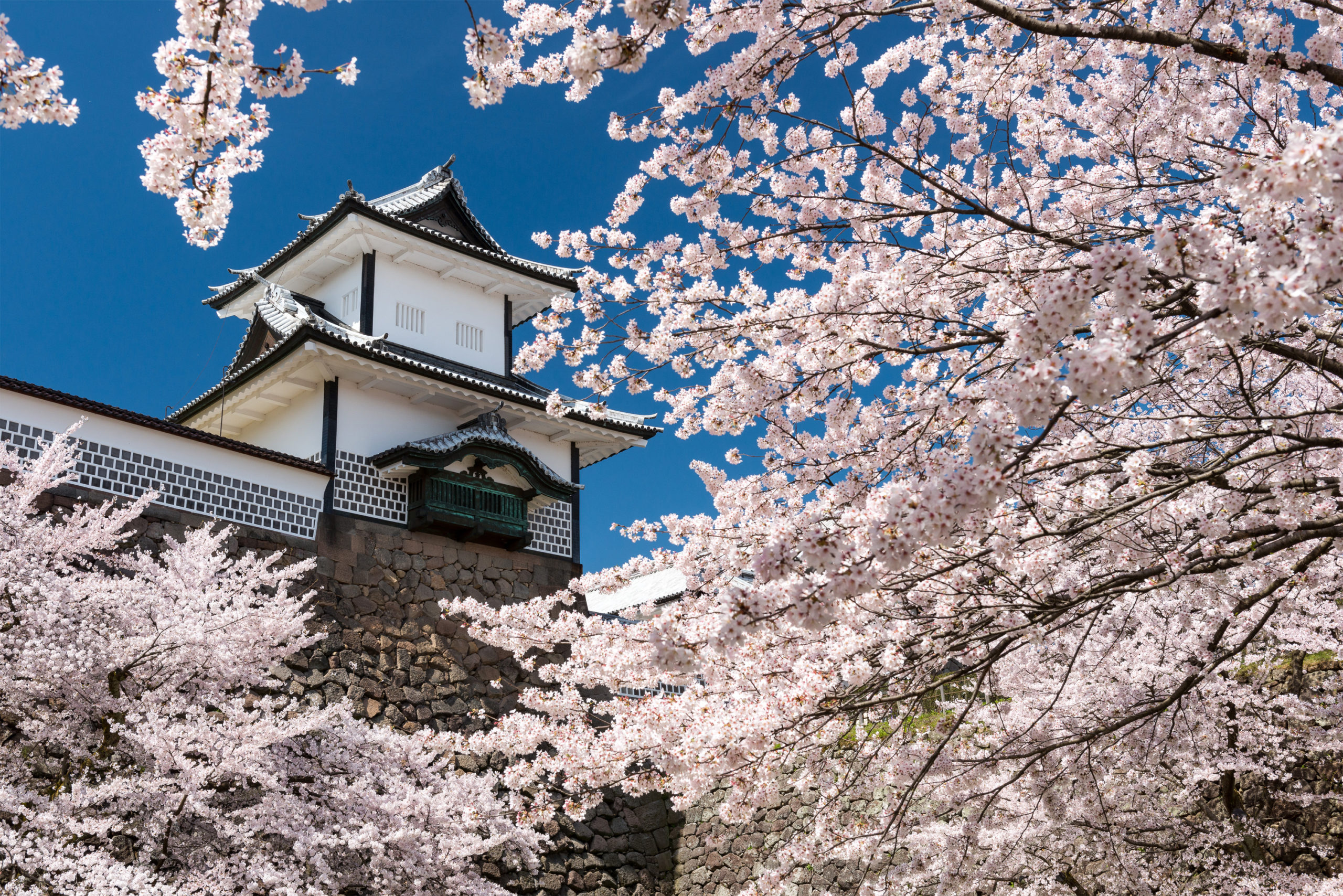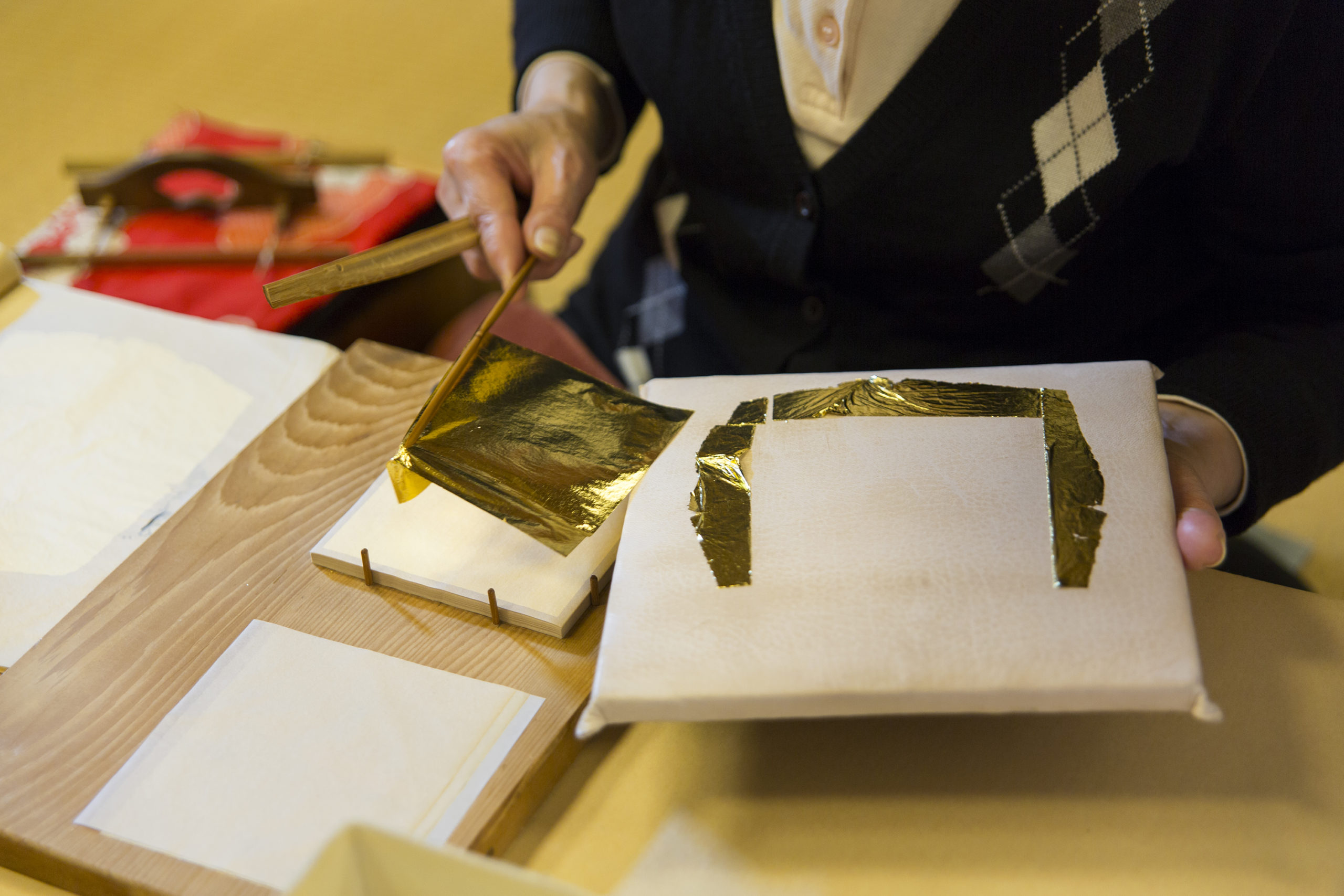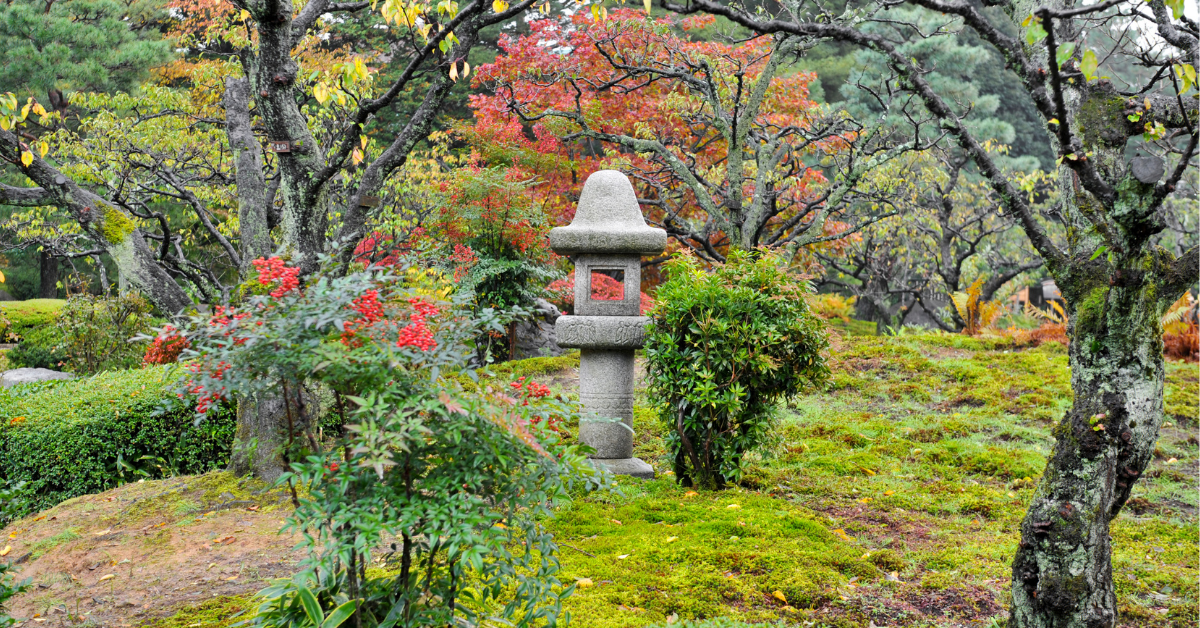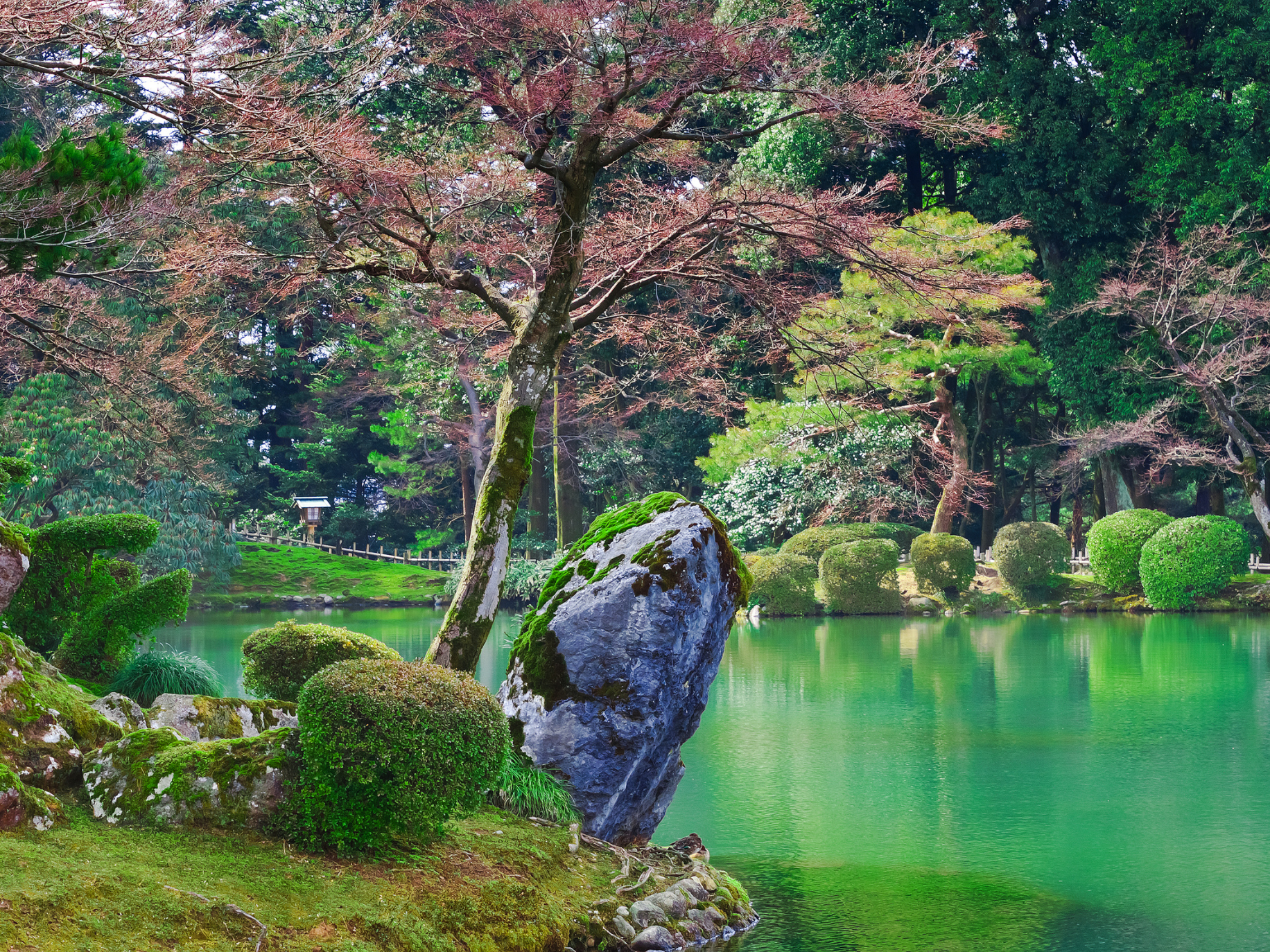Kanazawa is a must-do city in Japan if you are interested in arts, crafts, culture, gardens, food, and history. Located on the West Coast of Japan around three hours from Tokyo and Kyoto, Kanazawa was an important center for culture and art during the Edo period. Artists and artisans from all over Japan settled in Kanazawa over time, making it the cultural capital of the West Coast.
Let’s break down all that Kanazawa has to offer!
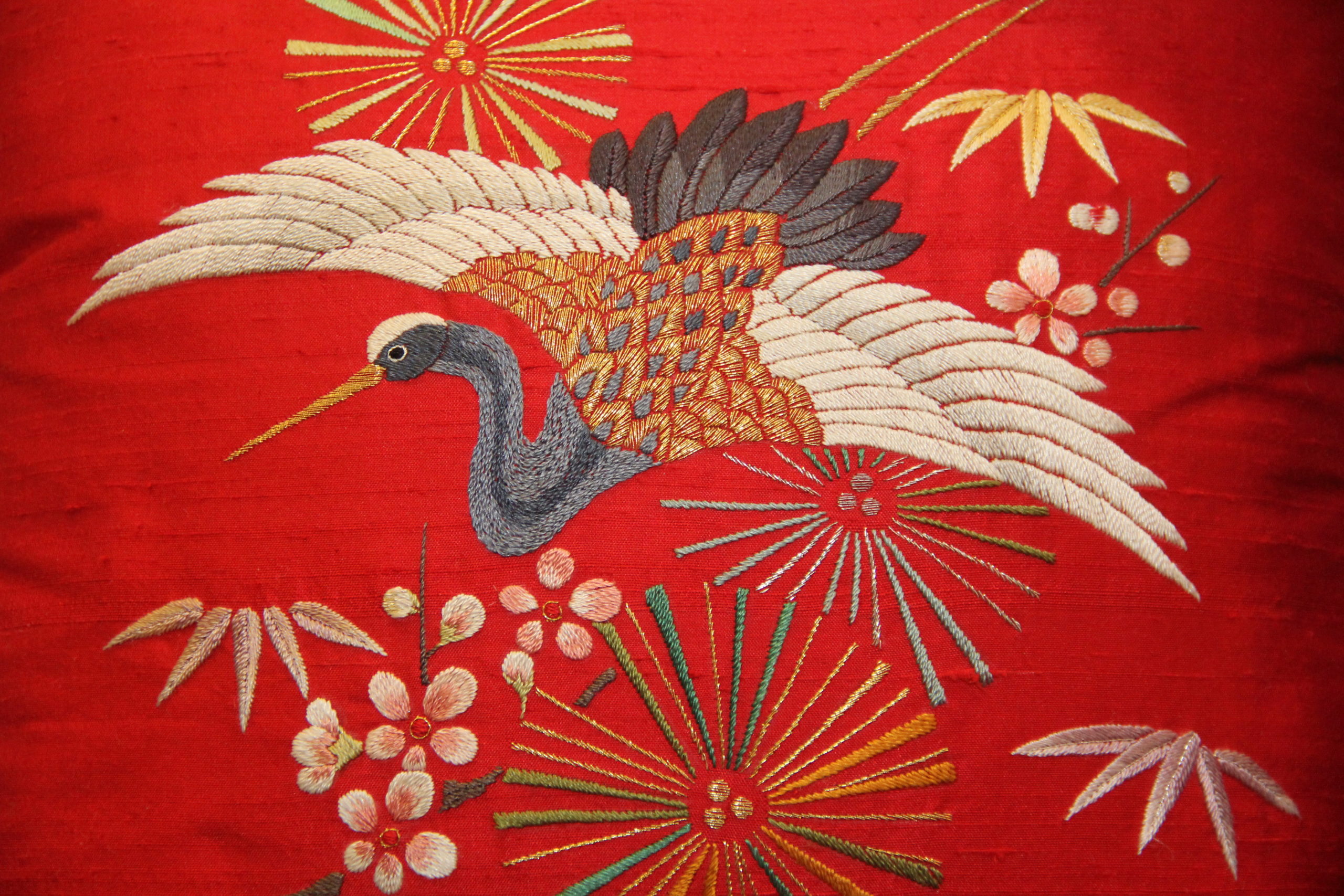
Kaga Embroidery at the Ishikawa Prefectural Museum of Traditional Arts & Crafts, Kanazawa, Japan. Image: City of Kanazawa
Kanazawa: Arts, Crafts & Culture Haven
A great place to start your visit to Kanazawa is the Ishikawa Prefectural Museum of Traditional Arts and Crafts, which exhibits 36 crafts of the area. Here you can feel and observe the traditional skills developed over the centuries. The permanent collection is grouped by “Clothes,” “Food,” “Houses,” “Praying,” “Festivals.” Special exhibitions introduce works from other parts of the country.
Authentic souvenirs from this museum shop are a must! Here you can touch and feel the handmade crafts handmade. With this hands-on approach, you can enjoy the beauty, skills, and preservation of the traditional arts.
There are many other specialty craft museums in the area where you can learn about the crafts and buy souvenirs. Displaying pottery is the Ohi Museum. At the Wajima Lacquerware Museum near the Wajima rice fields, you can see lacquer. Check out origami at Nippon Origami Museum in Kaga, a delightful onsen town an hour south of Kanazawa.
There are also several small museums to understand Kaga Yuzen kimono and Noh plays for culture lovers.
The Famous Gold Leaf
Producing 99% of Japan’s gold leaf, Kanazawa showcases gold leaf production in numerous ways. Make sure you go to the Yasue Gold Leaf Museum. For centuries gold leaf products have been produced in Kanazawa, including everything from ornaments to cosmetics. There are even shops selling gold leaf-covered ice cream, a local specialty! For the ultimate experience, try gold-leaf making and take a piece of Kanazawa home with you.
Kanazawa is also well-known for its Kutani pottery and ceramics. Kutani pottery is unique with its bright colors and intricate designs. Kutani pottery often includes gold leaf and has interlocking patterns in a variety of colors.
Kenrokuen Garden: One of Japan’s Top Three Gardens
A significant highlight of Kanazawa is Kenrokuen Garden. Kenrokuen is one of Japan’s most iconic landscape gardens. Created over several hundred years by the Madea family, it is one of the best examples of a strolling-style garden. Kenrokuen is adjacent to Kanazawa Castle. With natural walking paths, bright flowers, relaxing ponds, and cascading waterfalls, Kenrokuen has truly earned its place as one of the best gardens in Japan.
The name Kenrokuen refers to the six attributes of the garden- spaciousness, tranquility, artifice, antiquity, water sources, and magnificent views. Strolling through Kenrokuen, you will see perfect displays of each of these attributes and their connections. The design of Kenrokuen is to be beautiful at any time of year.
Higashichayagi: Kanazawa’s Geisha District
The beautiful wooden chaya, or teahouses, are well-preserved, and the Higashichayagi area is officially designated as a Japanese cultural asset. The wooden chaya date back to the 1820s where geisha entertained wealthy nobility and rich merchants.
Geisha culture still flourishes here. In the evenings, you can hear the sound of the shamisen and drums playing from the teahouses as the geisha sing, dance, and play traditional games.
During the day, you can wander through the narrow streets to visit a teahouse open to the public. Some chaya has been converted into cafes, and some have turned into shops selling gold-leaf products. Be sure to check out the tea houses’ refined architectural style and interiors. Some have an entire staircase covered in red lacquer and tatami rooms where geisha perform in the evenings.
Fresh seafood from the Sea of Japan
Due to its proximity to the Sea of Japan, Kanazawa’s seafood is some of the best in the country. Similar to the Tsukiji Market in Tokyo, the Omicho Market is famed for its seafood. Serving locals fresh seafood for 280 years, Omicho Market is known for deep-sea prawns and sea bream, making for some of the best sushi. It is easy to get a delicious seafood meal due to the many restaurants surrounding the market.
City of Samurai
Immerse yourself in the samurai lifestyle. Stroll through narrow streets lined with old earthen walls in the Nagamachi Samurai district. Here you glimpse inside the life of a samurai at the Casa Samurai Nomura, a restored home with a beautiful small garden.
Kanazawa is a fantastic piece of cultural heritage in Japan. From the traditional teahouses to artistic crafts and traditional gardens, every part of Kanazawa is rich in culture and history.
Check out my article on Naoshima to learn about another art-focused destination in Japan.
Would you like a journey to Japan that suits your interests? Set up a call with me here, and I can design a Japanese vacation just for you!




